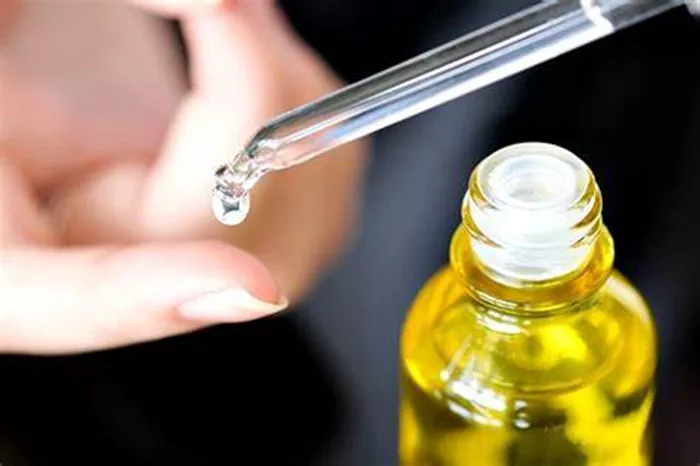Anemia is a condition in which you do not have enough healthy red blood cells to carry oxygen to your body’s tissues. Red blood cells contain hemoglobin, a protein that binds to oxygen and helps deliver it throughout the body. When you have anemia, your body can become oxygen-deprived, leading to symptoms such as fatigue, weakness, pale skin, and shortness of breath.
There are many different types of anemia, each with its own causes and treatments. Some types are temporary and easy to treat, while others may require long-term management. If you are diagnosed with anemia, one of the first questions you may have is, “How long will it take to treat?” The time it takes to recover from anemia depends on several factors, including the type of anemia, its underlying cause, and the treatment you receive.
In this article, we will explore the causes of anemia, the various types of treatment options available, and how long it typically takes to see improvements. We will also discuss the factors that influence the treatment timeline and how you can best support your recovery.
What Causes Anemia?
Anemia can be caused by a variety of factors. The most common causes include:
1. Iron Deficiency
Iron deficiency anemia is the most common form of anemia and occurs when your body doesn’t have enough iron to produce hemoglobin. Iron is essential for the production of red blood cells. Without enough iron, your body can’t produce enough healthy red blood cells.
Causes of Iron Deficiency:
Poor diet (low iron intake)
Heavy menstrual periods
Blood loss due to surgery or injury
Pregnancy, as iron requirements increase
2. Vitamin Deficiency
A lack of essential vitamins such as vitamin B12 and folate can also lead to anemia. These vitamins are necessary for the production of red blood cells. A deficiency in these nutrients can lead to a condition known as megaloblastic anemia, where the red blood cells are larger than normal and not functional.
Causes of Vitamin Deficiency:
Poor diet or malnutrition
Digestive disorders that interfere with nutrient absorption, such as Crohn’s disease or celiac disease
Lack of intrinsic factor (a protein needed to absorb vitamin B12), often due to an autoimmune condition called pernicious anemia
3. Chronic Disease
Chronic diseases like kidney disease, cancer, and inflammatory conditions (such as rheumatoid arthritis) can interfere with the body’s ability to produce red blood cells, leading to anemia.
4. Blood Loss
Anemia can also be caused by significant blood loss. This could be due to heavy menstrual periods, gastrointestinal bleeding (such as ulcers or hemorrhoids), or trauma. In these cases, the body loses red blood cells faster than it can produce them.
5. Hemolytic Anemia
Hemolytic anemia occurs when red blood cells are destroyed faster than the body can replace them. This can be caused by autoimmune diseases, certain medications, infections, or inherited conditions like sickle cell disease.
6. Aplastic Anemia
Aplastic anemia occurs when the bone marrow fails to produce enough red blood cells. This can be caused by autoimmune diseases, viral infections, or exposure to toxic chemicals.
Types of Anemia and Their Treatment
The treatment for anemia largely depends on the type and underlying cause of the condition. Let’s look at the most common types of anemia and how they are treated.
1. Iron Deficiency Anemia
Treatment for Iron Deficiency Anemia:The primary treatment for iron deficiency anemia is iron supplementation. In addition to taking iron supplements, it is also important to increase the intake of iron-rich foods, such as red meat, beans, spinach, and fortified cereals.
Oral Iron Supplements: These are the most common treatment and include ferrous sulfate, ferrous gluconate, and ferrous fumarate. These supplements typically start working within a few days, but it can take several weeks to notice a significant improvement in symptoms.
Iron-Rich Foods: Eating iron-rich foods can help boost iron levels naturally. Pairing iron-rich foods with vitamin C (like oranges or bell peppers) can enhance iron absorption.
Intravenous (IV) Iron: In cases where oral iron is not effective or if the person cannot tolerate iron supplements, IV iron may be recommended. This can help increase iron levels more quickly.
Recovery Timeline:
Mild Iron Deficiency: If the anemia is mild and caused by a simple iron deficiency, improvement may be noticed within 1 to 2 weeks after starting treatment.
Full Recovery: It typically takes 2 to 3 months for iron levels to return to normal and for full recovery. However, individuals may need to continue iron supplementation for several months to replenish iron stores.
2. Vitamin Deficiency Anemia
If the cause of anemia is a deficiency in vitamin B12 or folate, treatment involves supplementing these vitamins.
Treatment for Vitamin Deficiency Anemia:
Vitamin B12: Vitamin B12 deficiency is typically treated with B12 injections or high-dose oral supplements. In some cases, a vitamin B12 nasal spray may also be used.
Folate: Folate deficiency is treated with folic acid supplements. Folate-rich foods, such as leafy greens, legumes, and fortified cereals, can also help increase folate levels.
Recovery Timeline:
Vitamin B12 Deficiency: After starting treatment, symptoms can begin to improve within 24 to 48 hours. However, it may take several weeks for energy levels to return to normal. If nerve damage has occurred due to the deficiency, it may take longer for recovery.
Folate Deficiency: Folate supplementation typically leads to improvement within a few days to 2 weeks.
3. Anemia Due to Chronic Disease
Anemia caused by chronic disease, such as kidney disease or cancer, requires treating the underlying condition in addition to addressing the anemia. In some cases, medications called erythropoiesis-stimulating agents (ESAs) may be prescribed to stimulate red blood cell production.
Treatment for Anemia Due to Chronic Disease:
Erythropoiesis-Stimulating Agents (ESAs): These medications help stimulate red blood cell production and are often used in cases of anemia due to chronic kidney disease or cancer treatments.
Managing the Underlying Disease: Managing the chronic disease through medication, surgery, or lifestyle changes is essential to improving anemia.
Recovery Timeline:
Chronic Anemia: Recovery from anemia due to chronic disease depends on the severity of the underlying condition and the individual’s response to treatment. It may take several weeks to months to see significant improvements.
4. Hemolytic Anemia
Hemolytic anemia occurs when red blood cells are destroyed faster than the body can replace them. Treatment focuses on managing the cause of the cell destruction, whether it’s an autoimmune disease, an infection, or another underlying issue.
Treatment for Hemolytic Anemia:
Steroids or Immunosuppressants: If the cause is autoimmune, medications such as steroids may be prescribed to suppress the immune system and prevent it from attacking red blood cells.
Blood Transfusions: In severe cases, blood transfusions may be required to provide the body with healthy red blood cells.
Splenectomy: In certain cases, removal of the spleen (where red blood cells are broken down) may be necessary.
Recovery Timeline:
Acute Hemolytic Anemia: For acute cases, treatment can lead to improvement within days to weeks.
Chronic Hemolytic Anemia: Chronic forms may require ongoing treatment and monitoring, with recovery taking months to years depending on the severity and management of the underlying cause.
5. Aplastic Anemia
Aplastic anemia is a rare condition in which the bone marrow fails to produce enough red blood cells. Treatment often involves medications or a stem cell transplant.
Treatment for Aplastic Anemia:
Immunosuppressive Therapy: Drugs that suppress the immune system can help in cases of autoimmune-related aplastic anemia.
Stem Cell Transplant: A bone marrow transplant may be recommended for severe cases of aplastic anemia to replace the damaged bone marrow with healthy marrow.
Blood Transfusions: These may be needed to help boost red blood cell levels during treatment.
Recovery Timeline:
Mild Aplastic Anemia: With immunosuppressive therapy, improvement may be seen in several months.
Severe Aplastic Anemia: Stem cell transplants can take several months for recovery, and full recovery may take 1 to 2 years.
Factors That Affect Recovery Time
The time it takes to treat anemia varies based on several factors:
Type of Anemia: Different types of anemia respond to treatment at different rates. Iron deficiency anemia may resolve quicker than anemia due to chronic disease or hemolytic anemia.
Severity: More severe forms of anemia may take longer to treat.
Underlying Cause: Treating the root cause of anemia (such as vitamin deficiencies, chronic disease, or blood loss) is key to the recovery process.
Response to Treatment: Everyone responds to treatment differently. Some people may experience quicker results, while others may need more time.
General Health: Individuals with other health conditions may take longer to recover from anemia.
Conclusion
Anemia can take anywhere from a few days to several months to treat, depending on its type, severity, and the individual’s overall health. With appropriate treatment, many people with anemia see significant improvements in their energy levels and overall health. However, full recovery can take time, and in some cases, ongoing management may be required.
If you are experiencing symptoms of anemia, it’s important to seek medical attention. A healthcare provider can help diagnose the underlying cause and create a personalized treatment plan to address your specific needs. With proper care and patience, most people can successfully manage and recover from anemia.
Related Topics

































